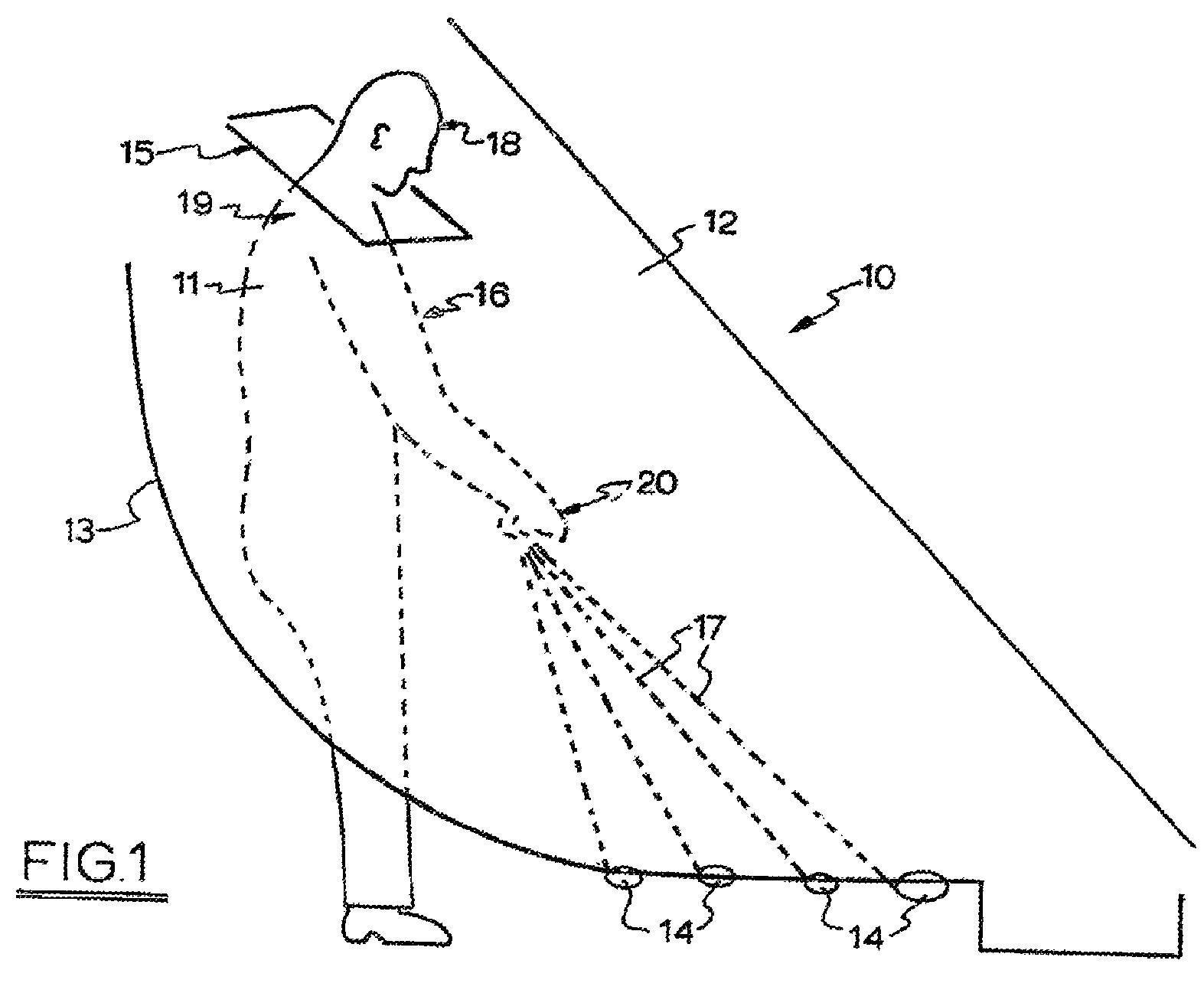Do You Love Golf Enough To Try This Swing Training Aide?
While I do love golf, I am not sure I would be willing to publicly use the device disclosed in the recently issued patent USPN 7513834 titled “Golf Swing Training Device.” Check it out.
Now the explanation:
A golfer may practice his golf swing for many hours by hitting large numbers of golf balls and judging the effect on the ball to assess the proficiency of the swing. This allows the golfer to practice important aspects of the game but does not really teach the development of a correct swing. It is often stated that the correct swing should include the golf club being swung in an arc which is substantially planar and that a very important aspect in ensuring a correct swing is to have a correct backswing.
A golfer may practice his or her golf swing under the guidance of an instructor or alternatively by following instructions given on practice videos or from books. The actions of a backswing include swinging a golf club in progression from the address position through the backswing and finally to the top of the swing whilst ensuring correct position of the shoulders, hands and club-head. A golfer may develop a poor backswing in some instances, particularly without the guidance of an instructor. This may lead to the golf-club being swung above or below the correct plane which may result in an incorrect forward stroke and follow-through which results in poor golf shots being played.
It would therefore be desirable if at least some of the preferred embodiments of the present invention provide a training device which will allow a golfer to practice a correct backswing which will provide a correct “feel” enabling the golfer to improve his or her golf swing. It would also be desirable if at least some of the preferred embodiments of the invention provide a training device which is simple to use and may be used in the yard of a house or similar area.
OK, that sounds good, but explain that thing around the golfer’s neck.
The device 10 is set-up for use by engaging the foot 22 and the support piece 23 with the ground and by coupling the attachment member 21 with the side of a wall, clothesline, tree or similar support. In use, the club (and thus the club-head), at the top of the backswing, pass under the attachment member 21. With reference to the correct address of the individual golfer 11, with the golfer’s head 18 extending through the aperture 15, the height at which the attachment member 21 is coupled to the support and/or the length of the attachment member 21 is adjusted so that the sheet 12 is angled correctly, that is, so that the underside of the sheet 12 is substantially in the plane defined by the golfer’s shoulders 19 and the head 14 of the club 17. Whilst this process might require assistance from another person, once the device 10 has been set-up, it can be left ready for use on a semi-permanent basis.
When using the device 10, the golfer 11 stands under the sheet 12 with his (or her, but referred to as his, for convenience) shoulders lightly brushing the underside of the sheet 12 and with his head 18 extending through the aperture 15 in the sheet 12. At address, the arms 16 hang from the shoulders 19 with the golf club 17 extending away from the golfer 11 such that the club-head 14 rests on the ground under the arcuate edge 13 of the sheet 12.
When executing the correct backswing, the shoulders 19 of the golfer 11 remain in light contact with the sheet, and therefore in a plane both at address and throughout a substantial portion of the backswing. The underside of the sheet 12 is positioned substantially on the plane of the shoulders 19 of the golfer 11. Thus, when a golfer 11 executes a backswing, the sheet 12 acts as a guide for the correct movement of the shoulders 19.
The club-head 14 of various golf clubs 17 also remains in the plane defined by the sheet 12 at address and throughout a substantial portion of the backswing. The arcuate edge 13 of the sheet 12, guides the club-head 14 throughout the backswing, thereby maintaining it in the correct plane, coplanar with the shoulders 19 throughout a substantial portion of the backswing. The hands 20 and arms 16 of the golfer do not lie on the plane throughout a substantial portion of the backswing. The golfer 11 practices his backswing by rotating the shoulders 19 (clockwise for right-handers and anti-clockwise for left-handers) in the plane as defined by the sheet 12. Throughout the backswing, the shoulders 19 never leave this plane, and the club-head 14 follows the path defined by the arcuate edge 13 of the sheet 12. As the golfer 11 rotates his shoulders 19, the club 17 and the hands 20 are taken back relatively low early in the backswing. Through the middle and final sections of the backswing, the golfer is forced to cock his wrists and fold his arms correctly so that his shoulders 19 and the club-head 14 remain on the plane defined by the sheet 12. The golfer’s head remains substantially still throughout the backswing. Using the device 10, the golfer 11 can therefore practice the correct backswing by repeating these movements over and over again.
Not for me.
Dave Dawsey – Tracking Golf Intellectual Property
PS – click HERE to check out interesting putter posts

